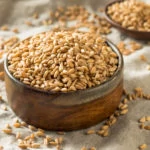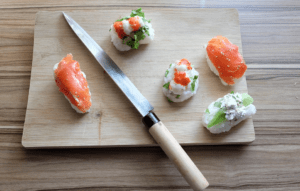Acai? It’s the fruit that made the deep purple color acai bowl popular on street corners, and it’s actually açaí, pronounced ah-sigh-ee.
What is an Acai Berry?
Açaí (Euterpe oleracea Mart) is a little round purple fruit that grows on acai palm trees in Central and South America. Acai thrives in swampy places like the floodplains of the eastern Amazonia.
The acai palm grows about 25 meters or 82 feet tall, and it produces fruit — the acai berry — year round. Acai berries are tiny (25 millimeters or 1 inch in circumference), round, black-purple fruits, and nearly 1,000 of them grow on the acai palm at a time. The inside of the fruit is mostly seed.
Even though you can find ripe acai berries year round, the rainy season where they grow will keep you from gobbling them up all at once. Harvest is best during drier seasons, usually between January and June, or from August to December.
Health Benefits of Acai Berries
Acai berries are popular in the West, especially eaten with granola and yogurt.
According to Wikipedia the nutritional breakdown of freeze-dried acai fruit pulp along with the berry’s skin showed per 100 grams of dry powder:
- 534 calories
- 52 g carbohydrates
- 44 g dietary fiber
- low sugar levels
- 8 g protein
- 33 g total fat
- 56% oleic acid
- 24% palmitic acid
- 13% linoleic acid
- “Negligible” vitamin C
- 260 mg calcium
- 4 mg iron
- 1,002 IU vitamin A
Acai berries contain plenty of possible health benefits, but they may not be as magical as advertising as made them out to be — and there are many other ways to include such nutrients in your diet without paying steep prices.
There aren’t substantive claims combined with laboratory studies that prove this fruit to be a power food, and health claims and scientific evidence don’t align in the popularity of the acai berry.
However, the fruit has been quoted in several scientific references for possibly aiding in rapid weight loss, improving cognitive function, helping to lower cholesterol levels, reducing the risk of heart disease, and in contributing to overall health.
There are several substitutes that you can use in place of products like acai fortified juice, and instead of eating acai berries like they’re going out of style (and they might be). Instead, try plant-based foods like black beans, lentils, avocados, other local berries, edamame, soy and olive oils, and the mighty leafy greens.
Acai Berry Food Products
Fresh acai berries have been a staple food for many centuries in the Amazon river delta region. The fruit is processed into pulp and used in beverages like grain alcohol, smoothies, acai berry juice, and in foods, cosmetics, and acai berry supplements.
In the Brazilian Amazon, acai berries make up almost half of people’s diet. That’s a lot of berries!
In North America, everyone knows the acai fruit for the popular “acai bowl,” a bowl piled high with oatmeal, nuts, fruit, natural sweeteners like honey, seeds, and acai puree or acai powder. There’s controversy over how healthy these actually are, given their high sugar content and the possibility that acai berries don’t actually hold as much of the glory as they’re given.
Acai oil can be used for cooking and in salad dressings. It’s more commonly used in cosmetics like soaps, skin moisturizers and body creams, and shampoo.
If you’ve jumped on the reduce, reuse wagon and it happens to be filled with lots of acai berries, save the seeds — the seeds can be used as fuel for making bricks.
How to Store Acai
If you climbed the acai palm tree, you may think twice before gulping the acai berries fresh. The scientific evidence says eating them raw can lead to Chagas disease.
Acai oil is full of oleic and palmitic fatty acids, but these diminish drastically and quickly in potency. Fresh oil is best if you’re into infusing, or use pressed oil within six months and store in a cold, dark place.
Acai powder and frozen acai pulp or puree are the forms of this berry that are most readily available. Store purees in the freezer for up to one year, and store powders in an airtight container in a cool, dark dark place up to the expiration date — these acai products tend to have a short shelf life.
Recipes With Acai
The popular-of-late acai bowl or smoothie bowl is made with a whole grain cereal base or berry smoothie base, topped with more berries, fruits, granola, seeds, and maybe honey. I like sliced avocado and bitter chocolate on there too.
There are many other recipes that don’t come in bowls too. Get creative and add a couple of spoons of acai powder to foods like brownies, cheesecake, pudding, creamsicles. Also, try making homemade jam for a delicious topping for ice cream or toast.
Where to Buy Acai
Dried acai berries, acai powders, acai supplements, acai juice, and other products are usually found in the vitamin or supplement isle of most grocery stores and more readily in health food stores.
You’ll likely see bottles with the black-purple berry on the front, near other natural medicines and supplements containing other berries, like cranberry supplements.











